Slovenian Food Dishes: Basic Overview
Common Ingredients
Common Cooking Methods
Courses
Meals
Key Taste
Eating Etiquette
Meal Presentation
Culinary Festivals
Influence and Fusion
Slovenian Food Dishes: Origin and Region
Cuisine
Cuisine’s Geographical Territory
Country’s Region
Popular Types of Slovenian Dishes
-
Cakes and pastries
Slovenian cakes and pastries are often enjoyed on occasions like Christmas and Easter.
They range from flaky, thin-doughed delights filled with various ingredients like nuts and seeds, to layered cakes with rich, creamy fillings and crisp pastry.
-
Stews
Slovenian stews are made with meats, vegetables, and spices. They might include everything from beans and potatoes to various meats, cooked slowly to meld flavors beautifully.
Neighboring culinary traditions inspire some stews, and they’re a staple in Slovenian homes, especially during winter or special gatherings.
-
Cured Meat
Slovenia takes pride in its cured meats, with specialties like dry-cured ham that’s air-dried in local winds and a sausage with a specific pork-to-bacon ratio, smoked over beech wood.
These meats are enjoyed thinly sliced with wine or as part of more complex dishes.
Slovenian dishes are specialties associated with the cuisine of Slovenia, a country in Central Europe. The country’s historical and cultural ties make its cuisine fairly similar to Austrian fare and Hungarian delicacies.
However, what makes Slovenian dishes stand out is the extensive use of fresh and seasonal ingredients. Slovenia’s vast forests and mountainous regions provide a wide range of organic ingredients widely used in local dishes.
In addition, many traditional Slovenian dishes have a simple and rustic character, using easy cooking methods and common ingredients.
I will cover other features of traditional Slovenian food, as well as its international popularity and healthy aspects.
But that’s not all; stick around for detailed descriptions of the 20 most popular dishes in Slovenia. Then, I will provide an overview of Slovenian cuisine and suggest the best beverages for pairing with local food.
20 Most Popular Slovenian Dishes with Filters
The 20 most delicious dishes in Slovenia are waiting for you to discover. Use advanced filters like alphabetical sorting, main ingredients, taste, cooking methods, dish types, courses, and global popularity to navigate this content more smoothly.
There are also filters based on specific culinary styles, such as traditional, national, street food, fusion, exotic, and vegetarian options, that you can use to improve your reading experience.
Idrijski Žlikrofi
- National
- Traditional
Idrijski žlikrofi is a traditional Slovenian dumpling dish that originated from the town of Idrija in the western part. A prevalent theory says that it was created by local miners’ wives in the 19th century.
Idrijski žlikrofi is filled with a savory mixture of potatoes, onions, lard, bacon or cracklings, and herbs. This Slovenian dumpling may look like ravioli, but it has two layers of pasta and is twice as fulfilling.
Locals typically serve Idrijski žlikrofi with mutton or rabbit sauce. As a hugely popular type of dumpling in Slovenia, it also enjoys the EU-issued Traditional Speciality Guaranteed (TSG) status.
Štruklji
- National
- Street Food
- Traditional
Štruklji is a classic Slovenian dumpling-like dish. Its dough is made from wheat or buckwheat filo pastry, while its filling is usually cottage cheese, nuts, or fruits for the sweet version and meat, vegetables, or tarragon for the savory version.
Created in the 16th century, štruklji was originally only available to nobles and the middle class on special occasions, such as Christmas. However, it is currently an everyday side dish to go with meat and gravy or to relish with buttered breadcrumbs as a dessert.
A popular štruklji variant is Kobariški štruklji, which hails from Kobarid, an area mentioned in Ernest Hemingway’s classic 1929 “A Farewell to Arms.” Kobariški štruklji is a sweet dumpling made by wrapping a thin layer of dough around a filling of walnuts, raisins, or lemon zest.
Potica
- Traditional
Potica is a superb Slovenian pastry dessert for festive occasions, such as Christmas and Easter. Its first recipe appeared as early as the 15th century.
Potica derives its appeal from a flaky crust of paper-thin dough covering a toothsome filling. There are more than one hundred choices of fillings, with ground walnuts, pumpkin seeds, bacon, and tarragon being the most preferred options.
Making potica requires a special baking mold to create distinct, mosaic-like patterns on each slice of this pastry. Its intricate preparation and rich flavors make it a popular festive dish and an EU-approved TSG specialty.
Prekmurska Gibanica
- Traditional
Prekmurska gibanica is a famous Slovenian dessert hailing from the Prekmurje region in the country’s northeastern part. It is a type of gibanica (layered pastry) made by alternating layers of poppy seeds, cottage cheese, nuts, and fruits between layers of filo pastry.
A complete Prekmurska gibanica offers a decadent contrast between the rich, creamy fillings and crisp pastry. This layered dessert is a must-have dessert for many special occasions, especially weddings.
In 2010, Prekmurska gibanica achieved the TSG status and has been under EU protection ever since.
Kranjska Klobasa
- Street Food
- Traditional
Kranjska klobasa, also known as Carniolan sausage, is a renowned type of Slovenian sausage from the Carniola region in the western part. What is so special about this iconic kind of sausage is its complicated makeup.
Unlike regular sausages, Kranjska klobasa requires a specific ratio of pork to bacon, which is often 80% and 20%, respectively. The selection of herbs and spices is also strictly defined, and the sausage is traditionally smoked over beech wood.
Carniolan sausage has a distinctly savory and smoky taste. In 2006, this renowned sausage was brought to space by astronauts of Slovenian descent.
Interestingly, Kranjska klobasa received the prestigious Protected Geographical Indication (PGI) status from the EU in 2016.
Pršut
- Traditional
Pršut is a popular type of dry-cured ham in Slovenia, especially in its birthplace, the Karst Plateau in the country’s southwestern region. It enjoys the PGI status ordained by the EU.
Locals prepare pršut by salting the hind legs of pigs with coarse sea salt, seasoning them with local herbs, and air-drying them in the bora wind. The aging process can last from 12 to 36 months and results in a complex taste and a tender texture.
The best way to serve the famed Slovenian dry-cured ham is to thinly slice it and enjoy it alongside Teran, the fragrant red wine in Karst.
Jota
- Traditional
Jota is a hearty stew originating from the mountainous and alpine regions of Slovenia. It is also known as Istrian stew since the Slovene Istria region in southwestern Slovenia is its birthplace.
Classic jota consists of boiled sour turnips, mashed potatoes, mashed beans, and cured pork (optional). This nutritious stew has a long shelf life and usually goes with boiled cornmeal.
Offering a tangy and savory taste and a thick, comforting texture, jota is a beloved dish for winter. Outside Slovenia, this energy-rich dish is also a famous dish in Croatia and Italy.
Ričet
- Traditional
Ričet, also known as barley stew, is a traditional Slovenian dish popular in rural and mountainous regions. Its main ingredients are barley, stock, sauteed seasonal vegetables, and cured pork (or other kinds of meat).
Showcasing the simplicity and heartiness of peasant cuisine, ričet was historically the typical fare for prisoners. Nowadays, this rich stew is a well-liked comfort food for Slovenians from all walks of life.
Ajdovi Žganci
- Traditional
Ajdovi žganci, translating to “buckwheat spoonbread,” is a traditional Slovenian dish made from buckwheat flour, water, and salt. The mixture is cooked and stirred until it forms crumbly bits, which are then served hot.
Ajdovi žganci was formerly a peasant food for people too poor to afford real bread. Today, people pair it with all kinds of food and dishes, like cracklings, yogurt, salads, sausages, or soups.
Although buckwheat flour is the namesake ingredient for ajdovi žganci, people often prepare it with other ingredients, such as actual wheat or cornmeal.
Matevž
- Traditional
Matevž is a simple and rustic Slovenian dish that comes from the Kočevsko region in central Slovenia. It is a mixture of mashed beans, potatoes, and occasional cracklings, which is seasoned with garlic and olive oil.
Matevž has its roots in rural, agricultural communities. Its name probably has its roots in the popular male name Matej (Mathew).
Slovenians usually enjoy matevž as a versatile side dish with bacon, salads, smoked meat, or sauerkraut.
Bograč
- Street Food
- Traditional
Bograč is a Slovenian meat stew that drew inspiration from the similar Hungarian dish goulash. It is especially popular in the Prekmurje region, near the Hungarian border.
The main ingredients of this rich stew are meat (such as beef, pork, or venison), mushrooms, onions, potatoes, paprika, and other spices. Bograč is traditionally prepared over an open fire in a traditional cooking pot called bogracs, hence the name.
In August, the inhabitants of the town of Lendava organize an annual competition called Bogračfest to find the best bograč cook.
Bujta Repa
- Traditional
Bujta repa is a Slovenian stew of grated pickled turnips, spices, and various pig parts such as the head, skin, or neck. Also, people often add boiled beans and a lot of lard to the stew so that it can reach its famously rich and nourishing taste.
Concerning the name, “repa” means “turnip,” while “bujta” is “kill” or “slaughter.” The latter refers to the fact that locals gather ingredients from slaughterhouses to cook this stew.
Slovenians in Prekmurje were the ones who first came up with bujta repa as a way to survive winter. Today, some vegetarian recipes replace fatty, meaty ingredients with wholesome plant-based stuff.
Štefani Pečenka
- Traditional
Štefani pečenka, literally “Stephanie roast,” is the Slovenian version of meatloaf. It is a common sight at celebratory meals, such as Christmas and New Year’s Eve feasts.
Štefani pečenka includes minced meat (pork or beef), spices, and, most importantly, hard-cooked eggs stuffed inside the loaf. Chefs have to position the eggs carefully so that when they cut the savory meatloaf, every slice contains a piece of creamy eggs.
People in Slovenia usually dip the rich slices of Štefani pečenka in meat gravy and serve them with roasted potatoes.
Frtalja
- Street Food
- Traditional
Frtalja is a popular half-omelette, half-pancake dish in Slovenia. It is especially popular in western Slovenia, where locals mostly serve it as a light meal or appetizer.
Because frtalja relies heavily on fresh herbs and greens, it is more common during spring and summer, with wild asparagus, young garlic sprouts, fennel, and parsley being popular ingredients. People chop and mix them with a batter of flour and eggs, then pan-fry the dish.
Frtalja goes well with bacon chops, sausages, or mushrooms, though this pancake-like dish is delicious enough on its own. According to a local custom, preparing frtalja with fennel on May 1st will chase vipers away.
Regratova Solata
- Traditional
Regratova solata, also known as dandelion salad, is a favorite springtime dish in Slovenia. It is made by dressing fresh dandelion greens in a simple vinaigrette of red wine vinegar, olive oil, and salt.
While fresh dandelion is bitter, the tanginess of vinegar and the richness of olive oil help balance the flavor profile perfectly. Some versions feature hard-boiled eggs, potatoes, or sweet dandelion flowers for a more substantial meal.
Tlačenica
- Traditional
Tlačenica, also known as resvuršt, or švargl, is the Slovenian version of head cheese. It is often associated with rural areas and farm life and represents an economical way to use leftover meat and offal.
Slovenians make tlačenica by filling a pig intestine or stomach with a spiced mixture of pork chops, pork cheeks, skin, and offal, like hearts and tongues. The final step is to boil the sausage in water.
Tlačenica can be eaten right away with bread and garlic as a cold appetizer or smoked for long-term preservation. This savory dish boasts a rich, savory flavor and gelatinous texture.
Prežganka
- Traditional
Prežganka, literally “browned soup,” is a traditional Slovenian soup with a base of browned flour or breadcrumbs. It hails from the mountainous region of Upper Carniola in northern Slovenia.
From a dish with humble origins, prežganka is now a widely enjoyed specialty across Slovenia and a recommended dish for people with digestive problems. Locals sometimes whisk eggs into the soup to create a richer flavor.
Some people even regard prežganka as an effective cure for hangovers.
Obara
- Traditional
Obara is a traditional Slovenian stew made with a variety of meats, including beef, chicken, game, or even offal. It often includes various vegetables, such as carrots, potatoes, onions, garlic, and parsnips.
Thanks to the diversity of its ingredients, obara offers many seasonal and regional variations within Slovenia. Its thick, rich sauce and tender chunks of meat and vegetables are an ideal match for the buckwheat spoonbread ajdovi žganci.
Several restaurants even offer polšja obara, a variety made from edible dormouse!
Pasulj
- Traditional
Pasulj is a popular Slovenian bean stew that has its roots in the broader Balkan region. Created as a peasant dish for winter survival, it is a hearty and nutritious mixture of white beans, bacon or sausage (optional), onions, garlic, and various spices.
Pasulj is prepared by slowly cooking the ingredients to meld their flavors together. In terms of side dishes, bread and pickled vegetables are ideal options.
Kremna Rezina
- Traditional
Kremna rezina, also known as Kremsnita or Bled cream cake, is a beloved Slovenian dessert based on an Austrian pastry called cremeschnitte.
Bled cream cake is particularly associated with the town of Bled in the northern region, hence its alternative name. The modern recipe was created by a chef in Bled in the mid-20th century.
Kremna rezina consists of two layers of crisp puff pastry with a thick layer of vanilla custard and whipped cream in between. The puff pastry is typically dusted with sugar icing on top.
Kremsnita is a much sought-after specialty of Bled and is usually served in a seven-by-seven centimeter square. Its mix of delicate, flaky pastry and rich, decadent filling has charmed countless guests and locals.
After learning about the individual Slovenian dishes, why don’t you take a look at the common features that unite them? The following section will shed light on this matter.
What Are the Notable Features of Slovenian Dishes?
To truly understand Slovenian cuisine, you must grasp the factors that define its unique characteristics; the content below will help you learn about them.
Austrian and Hungarian dishes lay the foundation for many Slovenian specialties. Due to historical and cultural ties, Balkan cuisine also plays a role in shaping Slovenian fare.
But most importantly, the local tradition of cooking food with easily accessible ingredients and simple techniques is the driving force behind many traditional Slovenian dishes.
Since forests and mountainous areas make up a large part of Slovakia’s terrain, ingredients like game meat, mushrooms, herbs, forest fruits, and so on are extensively used in local cuisine. Foraging for forest bounty has been a long-standing tradition in Slovakia.
Slovenian cuisine features many types of agricultural produce, such as pork, poultry, and vegetables. Seasonal and fresh ingredients are highly valued.
Next, I will recommend the best beverages for pairing with local food in Slovenia. Although this country is famous for wine, many other choices are worth considering.
What Beverages to Pair With Slovenian Dishes?
While there are many beverages in Slovenia, locals mainly enjoy the four following types of alcoholic and non-alcoholic drinks with their food.
Wine
Slovenia offers many brands of world-famous wine, which leads to various drink pairings with this type of beverage. My top picks are idrijski, pršut, and bujta repa for dry white wine, potica and Prekmurska gibanica for sweet dessert wine, and ričet and tlačenica for robust red wine.
Spirits
From fruit brandy to aged spirits, many rich and savory Slovenian dishes make ideal accompaniments, namely pršut, bograč, and bujta repa.
Beer
Slovenian beer is a traditional choice for cold cuts, appetizers, or stews, including Kranjska klobasa, pasulj, and ričet.
Coffee
The rich and bitter taste of Slovenian coffee makes it an ideal beverage for serving alongside desserts and pastries, such as potica, prekmurska Gibanica, and kremna rezina.
Let me know what you think about my Slovenian specialty recommendations in the comment section. Do you think that more dishes should be added? Feel free to speak your mind! And don’t forget to share this list of Slovenian dishes with your friends.






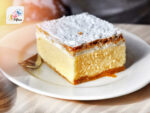
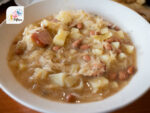
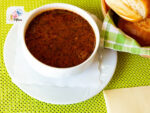

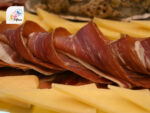

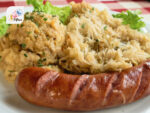
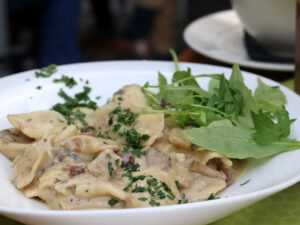
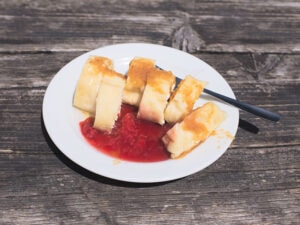



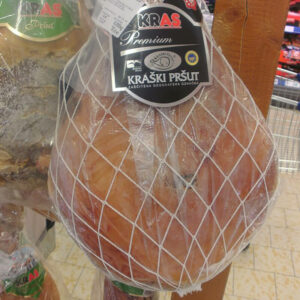
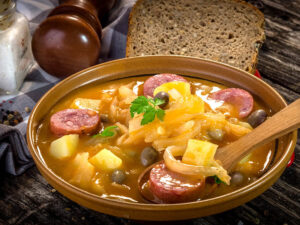
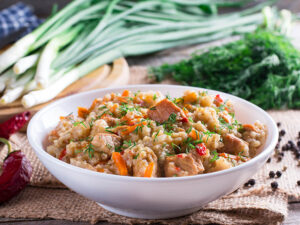

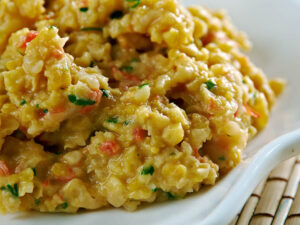
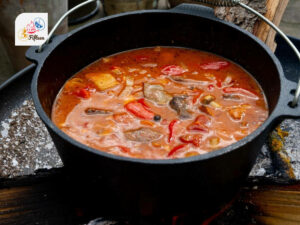
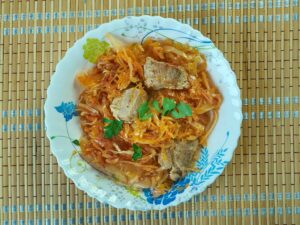

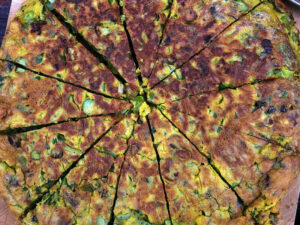
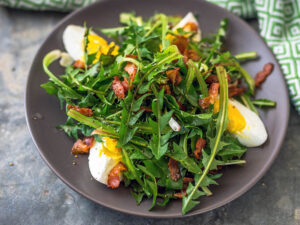
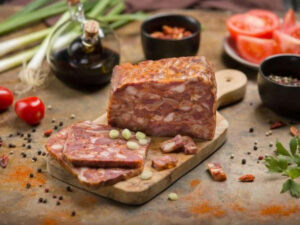
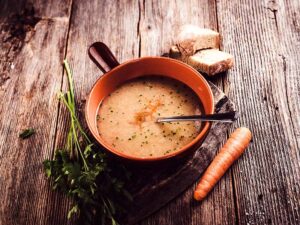
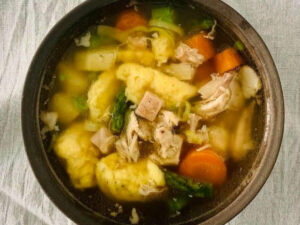
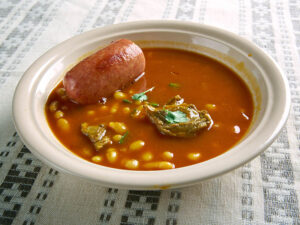
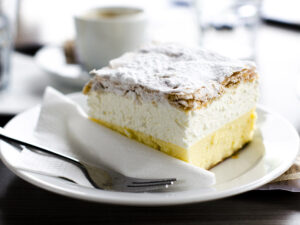

Jamie Scott
Editor in Chief, Senior Content Writer
Expertise
Home Cooking, Meal Planning, Recipe Development, Baking and Pastry, Food Editor, Cooking-video Maker, Western Food Evaluation Expert
Education
Le Cordon Bleu College of Culinary Arts
Local Community College, New York, NY
Jamie Scott is a skilled culinary expert and content creator specializing in Western cuisine. With over 15 years in the culinary field and formal training from Le Cordon Bleu, Paris, Jamie deeply understands how to blend nutrition with delicious flavors. His passion for cooking matches his commitment to making healthy eating accessible and enjoyable.
On Fifteen.net, Jamie brings a fresh perspective to classic dishes and beverages, offering readers insightful recipes, cooking tips, and a fresh view on meal planning that emphasizes taste, health, and simplicity.